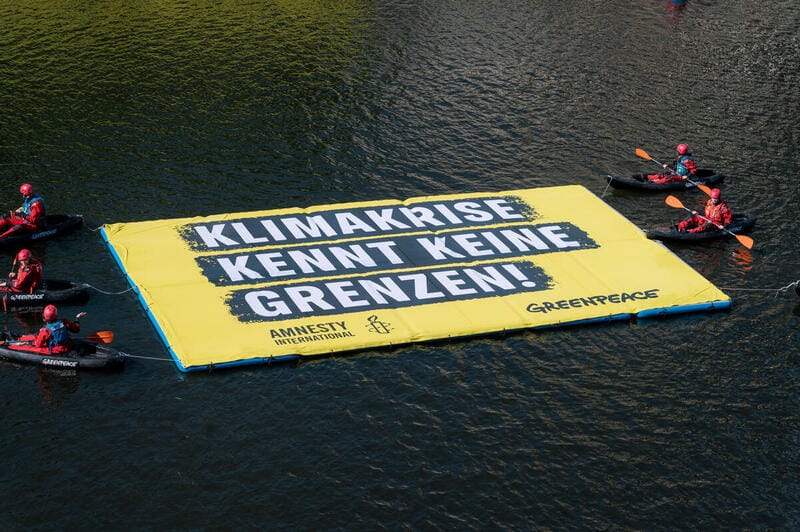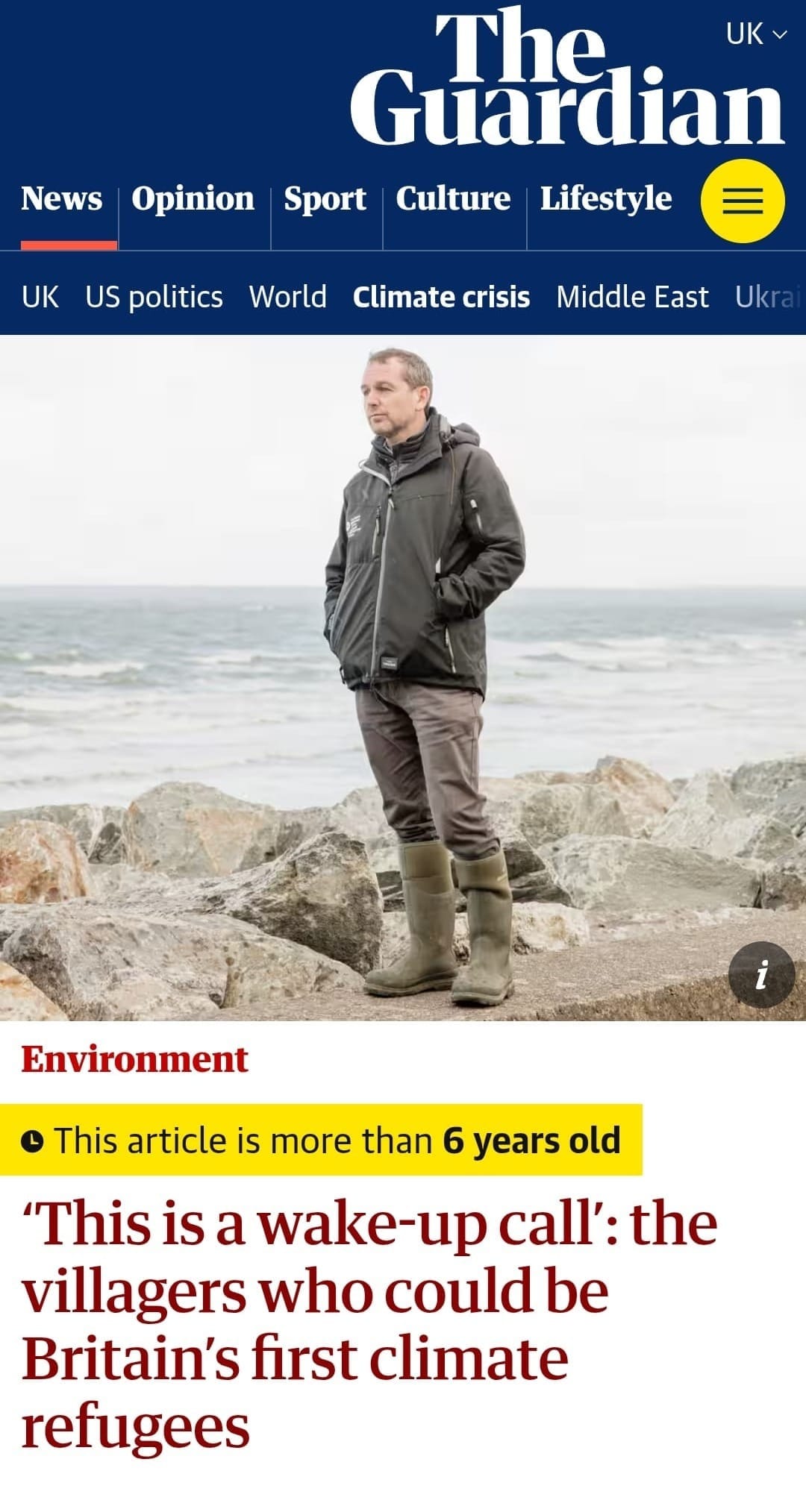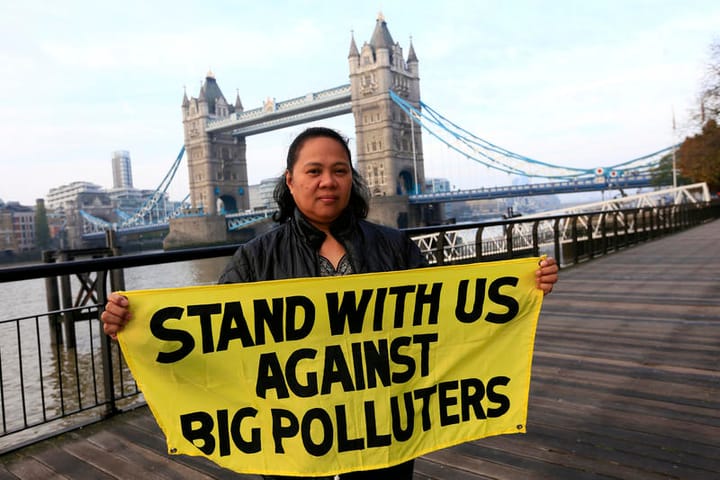There’s no legal definition of a climate refugee - does that matter?

When Amali Tower first started interviewing asylum seekers as part of resettlement work with international organisations in the early 2000s, she thought climate change was a “white people problem” myopically focused on polar bears on melting ice floes.
She was open and chatty, and in her broad conversations she started slowly seeing a pattern where people offered up personal stories of how environmental factors - usually drought - made returning to their home lands impossible.
The conversations were particularly stark with Somalis, who were starving because of the politics of a war which exacerbated problems caused by a prolonged lack of rainfall. “They were the experts telling me: ‘What the hell do you want me to go home to?’” says Tower.
When states first came together to discuss how to deal with refugees in the aftermath of the Second World War, climate change was not on their radar either.
The resulting 1951 UN Convention on the Status of Refugees and the later 1967 New York Protocol laid out what made someone qualify as a refugee - being forced to flee your country because of persecution, war or violence - their rights and the responsibilities of nations that grant them asylum.
Stormy seas
But the world has changed a lot in the intervening decades. The forced movement of people is now an inevitable consequence of rising greenhouse gas emissions, whether due directly to extreme heat or the resultant impacts of drought, crop failures, extreme weather or sea level rise. In fact, it is already happening at a large scale.
In this stormy reality, some people are and will be forced to cross international borders in search of safety, triggering the difficult question of whether other states will accept and harbour them.
The concept of ‘environmental refugees’ has been around for decades, and its climatic cousin has more recently become established in news headlines and climate policy circles. The Guardian depicted residents of a coastal Welsh village as potentially the UK’s first climate “refugees” back in 2019. Al Jazeera reported in 2023 on the “real hell” of “”climate refugees” battered by floods in Libya. In the US, CNN wondered what would happen to the “climate refugees” of the LA wildfires earlier this year. And in an ongoing climate lawsuit brought by Torres Strait islanders, who argue the Australian government owes them a duty of care to protect them from climate harm, plaintiff Uncle Paul Kabai said he fears becoming a “climate refugee”.

It is now a common emotive framing; a “simple and impactful phrase that sparks discussion about the impacts of the climate emergency”, according to the UNHCR.
However, it is a problematic phrase for several reasons. For a start, none of the above examples properly satisfy the legal definition of a refugee; if these people are forced to move it would happen internally (even if for people like Torres Strait islanders moving to mainland Australia would be just as existential an upheaval). And the narratives often focus on risks to the Global North at the exclusion of the much greater and more unjust migration crisis already happening in the Global South.
It is also politically contentious. Speaking at a webinar on climate migration, David Durand-Delacre, senior researcher at the Institute for Environment and Human Security, United Nations University, says the media often uses the term ‘climate refugee’ because readers understand it.
But although various international declarations and bodies have recognised that climate is an important driver of displacement, Durand-Delacre says the word is too sensitive to use in policy discussions because it suggests states have specific legal responsibilities, which they have largely avoided to date.
Dr Cristiano D’Orsi, lecturer and senior research fellow at the South African Research Chair in International Law, University of Johannesburg, notes that the Refugee Convention explicitly rules out “victims of famine or natural disaster” unless they also have a “well‑founded fear of persecution”. For instance, people fleeing Ethiopia in the 1980s could not justify this on the basis of drought but because they feared persecution by the military dictatorship which was deliberately restricting food supplies.
Tower had become increasingly concerned about the plight of people escaping from disasters and the way the conversation about on migration was shaping up, so she founded a non-profit organisation called Climate Refugees to advocate for better protection for displaced people. She says existing refugee law is a “post-colonial construct” originally intended for Europeans fleeing the Second World War, so it is not well suited to the modern international landscape.
That has left what has been described as a “clear void” in the international legal framework, which is failing to protect people fleeing climate-related disasters and other harms caused by environmental degradation.
To address this, some, including Cristina-Ioana Dragomir, clinical associate professor in liberal studies at New York University, have called for a specific definition of a climate refugee. As well as potentially helping affected people get asylum, the idea is that this would give a clearer picture of who is moving where and why, and it might help depoliticise the issue.
In 2023, Ian Fry, UN special rapporteur on the promotion and protection of human rights in the context of climate change, recommended states and policymakers establish a new protocol under the 1951 Refugee Convention to give legal protection to persons displaced across international borders due to climate change. He also suggested that regional human rights bodies expand their definition of refugees to include these individuals.
Until such a protocol is established, Fry urged governments to pass national laws providing humanitarian visas for people forced to leave their countries due to climate change.
Attempts to further a law protecting “climate displaced persons” in the US have not gone anywhere. However, Pakistan is currently discussing a Climate Refugees Rights and Protection Bill which, if passed, would make it the first country to formally recognise climate refugees as a distinct category.
But there has been a huge amount of resistance elsewhere, driven largely by political scaremongering around migration which is fuelled by and increasingly fuelling far-right sentiment across Europe and the US. In recent weeks, the US began enforcing a travel ban on people from 12 countries, several of which have experienced hunger and displacement, as well as instability, due to climate change. “Migration… has become the most toxic divisive issue,” says Tower.
It is perhaps no surprise, then, that there seems to be a “growing consensus” among concerned agencies, including the UN’s Migration Agency (IOM) and UNHCR, that ‘climate refugees’ is an unhelpful term. In 2019, Dina Ionesco, the IOM’s head of migration environment and climate change, cautioned against a “narrow and biased debate” around the issue. She warned that opening up international refugee law would be a minefield and said granting refugee status to climate migrants could end up excluding people who actually need it.
Some academics have entered the fray too.
Jane McAdam, professor of law and former director of the Kaldor Centre for International Refugee Law at UNSW Sydney, has long argued that the concept of a climate refugee is “erroneous as a matter of law and conceptually inaccurate”.
And in a recent paper for Harvard University’s Human Rights Journal, researchers Randall Abate and Chhaya Bhardwaj argue that it would be difficult to find consistent terminology to describe the climate migration phenomenon that would both fully protect people and minimise stigmatisation of marginalised groups.
To the courtroom
With legal uncertainty, little political appetite for a new international protocol and a growing number of people affected, litigation increasingly has to be invoked. The Climate Mobility Case Database has collated 27 relevant judgments from across the world including Australia, Colombia, Kenya and Hungary.
Italian courts have several times overturned decisions by public authorities initially denying humanitarian protection to asylum-seekers with a climate connection. These involved people from a variety of countries, who generally did not see themselves as climate refugees but whose lawyers framed their cases in ways that teased out the environmental roots of their plight.
A 2021 Italian Supreme Court decision in relation to a Nigerian man, in particular, found that judges should not limit their considerations to armed conflict but should include social, environmental or climate degradation and situations in which natural resources are subject to unsustainable exploitation when evaluating these kinds of claims.
Several people have been allowed to remain in New Zealand in cases where the immigration tribunal found climate change heightened their existing vulnerability, such as old age, poverty and physical disability.
By contrast, a Guatemalan man who claimed his family were climate refugees was denied asylum in the US, as they were not part of a specific protected group. (Refugee rights groups are likely to try different legal arguments in future claims).
The UN Human Rights Committee is not a court, but it was given an important case to examine in 2015 when a citizen of Kiribati called Ioane Teitiota complained that New Zealand had violated his right to life by denying him asylum. He said climate change had forced him to leave the island because sea-level rise was eating away the available land, driving up property prices and spurring violence. He also said growing crops had become more difficult because of saltwater intrusion and drinkable water was in increasingly short supply.
Teitiota lost his individual claim in 2020, but the committee affirmed that people should be protected from being sent somewhere where their life or physical integrity is at risk from climate change - and they don’t have to prove that they would face imminent harm. “Given that the risk of an entire country becoming submerged under water is such an extreme risk,” it added, “the conditions of life in such a country may become incompatible with the right to life with dignity before the risk is realized.”
Committee expert Yuval Shany said the decision “sets forth new standards that could facilitate the success of future climate change-related asylum claims”.
A 2023 report from the UN Environment Programme expects a rise in the number of such lawsuits. Prof McAdam says jurisprudence on climate and refugees has evolved significantly in recent years and sees signs of increasing international cross-fertilisation.
But litigation alone cannot fill the void.
Prof McAdam and others published a Practical Toolkit published in February by the Kaldor Centre, Center for Gender & Refugee Studies (University of California College of the Law), and the School of Law and Human Rights Centre (University of Essex) seeking to debunk the idea that climate-related asylum claims fall outside the scope of existing refugee or human rights law.
The toolkit notes that displacement in the context of climate change - like all displacement - is complex because people are forced to move for a variety of social, economic, cultural and political reasons. Scientific reports by the Intergovernmental Panel on Climate Change (IPCC) firmly establish that climate change disproportionately affects people who are already vulnerable for other reasons, and makes them more vulnerable to other bad things happening to them.
So while there aren’t any special rules for asylum claims involving climate change, the toolkit argues that international refugee and human rights laws apply just as they do in any other context - banning states from sending back people “where the impacts of climate change and disasters on the ground generate or exacerbate the risk of persecution or other serious harm”.
Dr D'Orsi believes there has been a significant shift in how international organisations recognise people fleeing environmental disasters, adding that he sees no reason to distinguish between climate-related impacts and entirely natural events such as volcanic eruptions.
This chimes with a 2020 guidance document from the UNHCR, which warned against taking a “narrow view” of the effects of climate change and disasters in asylum applications because it may prompt decision-makers to deny claims, but said people fleeing in the context of the adverse effects of climate change and disasters "may have valid claims for refugee status under the 1951 Convention".
“Refugee law won't help everybody,” admits Prof McAdam, who says it needs to be supported by legal migration routes, disaster risk reduction and climate adaptation. “But it will certainly help some people.”
Regional action
The toolkit has a special focus on Africa’s progressive legal framework, which recognises large-scale displacement, such as from a serious disaster, at both regional and national levels. The Kampala Convention, adopted in 2009, explicitly requires states to protect and assist persons who have been internally displaced due to natural or human made disasters, “including climate change”. And in 2023, the African Commission on Human and Peoples’ Rights endorsed the expansion of regional refugee protection to people whose fundamental rights are affected by climate change.
Africa is important not only because it is so vulnerable to climate impacts but because its nations have already opened their borders to millions of displaced people.
It is not the only example of regional action. Latin America’s 1984 Cartagena Declaration on Refugees - already broader than the international Refugee Convention - has since been followed up with an action plan for people affected by climate disasters. And at least 18 Pacific island nations have endorsed the Pacific Regional Framework on Climate Mobility, which includes regional collaboration on cross-border relocation to ensure human rights are being respected.
However, a limit is being reached. Uganda’s open-door approach to refugees, for example, is under increasing strain. The Institute for Security Studies says existing frameworks are not always being applied in African countries in a meaningful way because of poor resources and technical knowledge alongside rising nationalism and waning political will to support refugees.
Prof McAdam says there has been a good initial response to the toolkit, whose development was supported and endorsed by UNHCR. “Refugees have always been scapegoated and there's always this political tension,” she says. “But these are obligations that governments have agreed to in international law.”
Meanwhile, the Kaldor Centre is pushing for a new global treaty currently being negotiated on the protection of persons in the event of disasters to recognise the risks of displacement and to explicitly acknowledge states’ duties to protect human rights under these circumstances.
Litigation may well come into play in a different way in future. In a recent report about people crossing the US-Mexico border, the International Refugee Assistance Project (IRAP) said it would like to see people bring legal challenges against policies that block asylum access for climate-displaced people who also face persecution, and also against governments for human rights violations resulting from their policies.
It is possible that international courts could weigh in on the issue too. The International Court of Justice, which is expected to publish its advisory opinion on climate change soon, was petitioned during hearings last December by the Solomon Islands to recognise people displaced beyond their borders for climate-related reasons as refugees.
"You're dealing with the limitations of our imagination and unwillingness to engage in the human experience that is climate change"
Tower strikes a strong note of caution that focusing too heavily on the legal definition of climate refugees can distract from the huge scale of the problem and how cross-cutting it is - and dehumanise the people at its heart.
She says it ignores the fact that most displacement will be internal, with just as much upheaval for those who move. And countries managing these movements will need huge amounts of support and funding; at present international spending on border security far oustrips spending on adaptation measures which would help people stay on their own land.
On top of that, those worst affected have done little to contribute to the climate crisis, Tower points out. “You're dealing with the limitations of our frameworks and laws, but you're also dealing with the limitations of our imagination and unwillingness to engage in the human experience that is climate change.”



